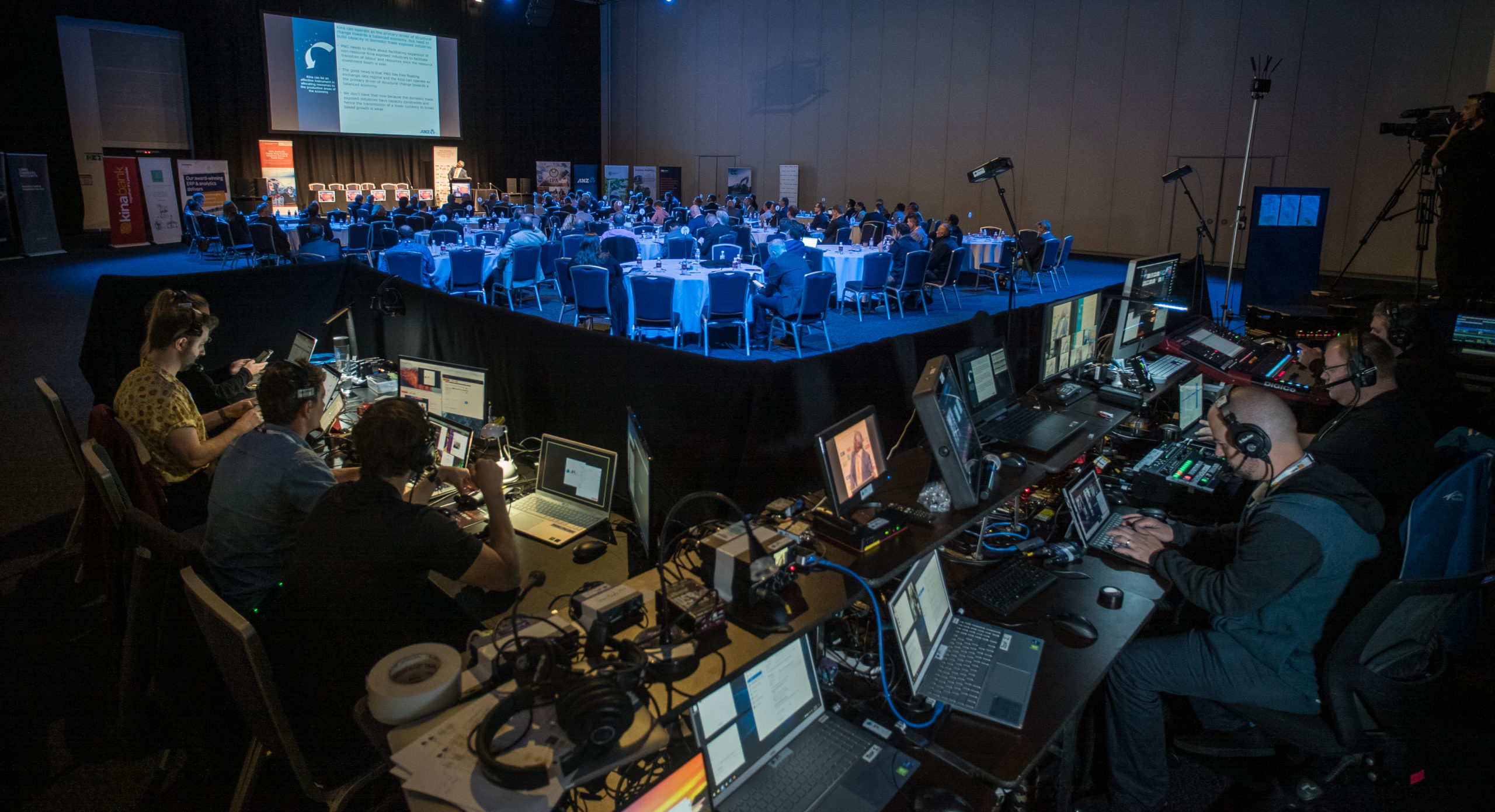Top tips for event planning in 2022
And just like that, it’s November! With most of 2021 behind us and a new year on the horizon, now is a great time to reflect on event learnings and experiences so we can help you plan for the future. Here are our Top 5 Dos and Top 5 Don’ts for event planning so you can strut into 2022 like it ain’t no thing!
We think you should say guh-bye to these common event pitfalls in order to improve your planning and management skills in the upcoming year:
1. Don’t let limitations stifle your event’s success.
The past two years have truly tested the flexibility and agility of planners across the globe. After navigating tough waters and uncharted territories, we’ve learned that many barriers don’t have to equal a canceled or subpar event. Understanding the complexity of a challenge or limitation can help you select an available and robust solution that allows you to address issues while still executing a successful, strategic event.
For example, we’ve seen many live events successfully shift to a virtual or hybrid format. Building on that and looking forward to next year, if large-scale, in-person events are situationally problematic, lean on an integrated technology platform to deliver beyond-expectation event experiences powered by AI while staying within budget. Keep moving forward with event tech that makes a road closure a welcome detour.
2. Don’t burn out by planning too much, too quickly.
This one is for both you as a professional and your attendees. Let’s start with you. The past year (at least) has been stressful for many. Maintaining a work-life balance is integral to an overall healthy lifestyle. Set boundaries to keep work and home separate by disconnecting at a set time each day. While working, delegate tasks and communicate effectively so team members understand their roles and are empowered to support the goal. Get help by leveraging event management tools to create a workflow that reduces stress and boosts efficiency.
When you plan an event, keep attendee-burnout in mind. Events – whether in person, virtual or hybrid – can be overstimulating, which threatens an overwhelming experience. We’ve seen this pitfall pop up in an effort to deliver bigger, better experiences. In the new year, consider allocating downtime for eventgoers. Incorporate time in between activities, free time, social time, and/or activities that allow the mind and body to take a breath and stretch. Everyone appreciates a break!
3. Don’t select a provider solely based on budget.
4. Don’t limit engagement opportunities.
Remember that engagement can mean something different to each attendee. Make sure your events offer something for everyone. Opportunities for engagement exist before, during, and after your event, all of which are key ingredients to a positive experience.
Vary the types of engagement throughout by including participatory activities like team building, facilitating conversation or chat rooms where participation is beneficial but voluntary, leveraging social media engagement opportunities, offering giveaways and chances to win prizes, or using technology to personalize engagement with AI. There are so many possibilities when it comes to how your attendees can interact with your brand and sponsors. Work with engagement experts to create memorable experiences that last even after an event is over.
5. Don’t forget the things you’ve learned in 2021.
This past year especially has proven that people love having options, so let attendees choose how they participate, interact, communicate, even how they register. Questionnaires, for example, can provide interest-based agendas and an exhibit matchmaker lets attendees choose which exhibit is important to them.
Now that you know what not to do, let’s focus on our top 5 proactive event to-dos for the next year:
1. Do plan with plenty of time.
Not only should you give yourself plenty of planning time but build ample wiggle room into each event. Be sure that activities, presentations, lectures, etc. are not scheduled back-to-back and have a bit of a buffer built in. This enables attendees to absorb what they’ve just heard or seen, gather themselves if they must physically move between locations, and prepare for what’s next.
Event management solutions can take care of your timeline with session tracking data. This insight can help planners discover how long attendees spend at different exhibits and provides a birds-eye view of event flow. Understanding such data points exposes where you may need some extra time in future schedules for optimal experiences.
2. Do make your event professional your partner, not just your tech provider.
Your event ally is more than just the sound guy or tech help. Fortunately, these days you get to work with a partner, not just a vendor. Capitalize on the value of a specialist team and dedicated account manager who will collaborate with you through the entire event process, from pre-planning to execution and follow-up.
Oh yeah, and the good ones can cover all the techy stuff too, for both hybrid, and virtual meetings. Your tech should bridge the gaps and invite the virtual, live. With features like Go Live and enhanced Exhibitor Matchmaking, your virtual audience will feel at home (no pun intended) at your next virtual or hybrid event. Harness the skills of talented meeting professionals who bring more to the table than just the tech!
3. Do be creative with content.
In the new year, stay committed to thinking outside the box! Content will continue to evolve in its placement, display, and absorption. Seize a chance to have fun and be creative with it by implementing assets such as gamification, live surveys, and polls, push notifications, chat rooms, and so much more.
Being mindful of your brand’s voice and tone, consider content that is easily shareable (think infographics, reels, and quotes), able to be repurposed (think blogs knowledge articles), relevant and timely (think user-generated content), referential (think pre-recorded content), engaging (think live surveys), and stimulating (think gamification).
Remember to consider content platform and display. While some video content may work well for a large screen, utilize technology that can deliver a superior mobile experience for smaller screens as well.
4. Do make everyone’s safety and security a priority.
5. Do continue doing what you love.
Wrap Up
Though navigating the event industry is at times difficult, the lessons of the past year have been insightful. With our shared knowledge and common goal of making event magic, continue to leverage learnings to your advantage in 2022:
- Don’t let barriers become limitations.
- Avoid event burnout both in planning and execution.
- Budget for providers who can meet all your event needs.
- Keep engagement opportunities diverse.
- Use past learnings to inform future events.
- Build sufficient time into event schedules.
- Look beyond just the tech help; partner with a powerhouse.
- Stay current with content style and delivery.
- Prioritize safety and security, even if it means pivoting formats.
- Keep at it! Learn more about how we can support your passion for planning.
We can’t wait to see what you do the next year!
For further reading: When you plan an event, keep attendee-burnout in mind. Events – whether in person, virtual or hybrid – can be overstimulating, which threatens an overwhelming experience. We’ve seen this pitfall pop up in an effort to deliver bigger, better experiences. In the new year, consider allocating downtime for eventgoers. Incorporate time in between activities, free time, social time, and/or activities that allow the mind and body to take a breath and stretch. Everyone appreciates a break!




